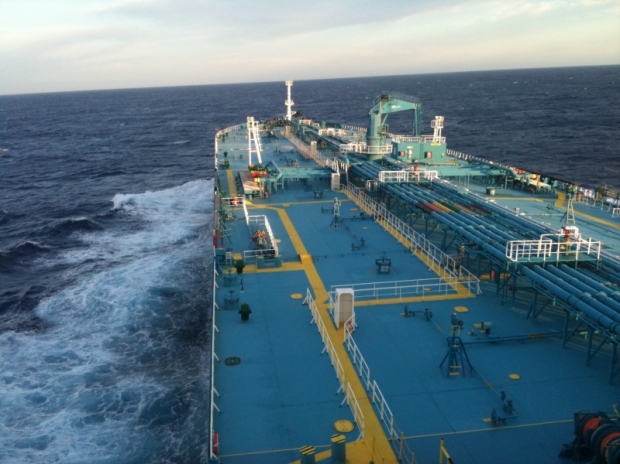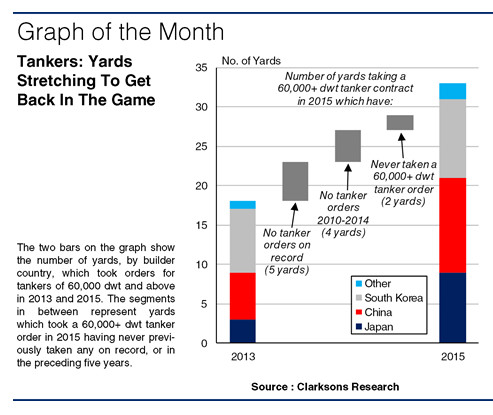As the downturn in the number of new vessel orders last year took hold, shipyards’ flexibility to switch sectors to take orders became a key factor in their ability to face up to an extremely challenging period. Tanker newbuild orders provided one source of business amongst the gloom, so how able did yards prove in demonstrating their adaptability to take advantage of this demand?

Crude Oil Tanker Target - Image: Samsa Emin Koruklu
The tanker sector was one of the few bright spots for shipbuilding in 2015, with the volume of new tonnage ordered reaching its highest level since 2008. A total of 456 tankers of a combined 49.5m dwt were contracted globally, an increase of 72% year-on-year. This was in stark contrast to the majority of other markets in which newbuilding interest in 2015 was muted. As a result, many yards struggling to secure new contracts, particularly for bulkers, diversified into the tanker sector.
While Korean yards took the largest share (46%) of tanker orders in 2015 in dwt terms, many shipbuilders in Japan and China which had not recently taken tanker contracts were particularly active in entering or returning to the sector. Looking at vessels of 60,000 dwt and above, 33 shipyards took an order in 2015, the highest total since 2006.

This compares to the 18 yards which took a 60,000+ dwt tanker order in 2013, when 528 tankers of 37.6m dwt were contracted. Of those ‘extra’ yards that didn’t take any 60,000+ dwt tanker contracts in 2013, but did secure contracts in 2015, 5 had never previously taken a tanker order on record. A further 4 yards had not taken any tanker orders in the period 2010-14. The majority of these 9 shipyards were primarily bulk carrier builders which diversified into the sector in 2015 as their normal source of new contracts dried up. As well as these ‘new’ players, there were also 2 yards which had taken tanker orders previously, but only for vessels under 60,000 dwt. Upsizing was a clear short-term trend in tanker ordering in 2015, with the average size of new orders reaching c.108,500 dwt compared to c.77,200 dwt in 2014, and some yards were able to win contracts for bigger vessels for the first time.
The number of Japanese yards taking a tanker contract (60,000+ dwt) tripled between 2013 and 2015, with 9 yards taking a total of 47 orders last year. Meanwhile in China, 12 yards took orders last year for 81 tankers of 60,000+ dwt, up from 6 yards in 2013. The majority of the ‘extra’ builders across both countries were previously focused on the bulk carrier sector, diversifying into tanker construction in order to secure new work. Outside of the major Asian builder countries, Spanish yard Navantia Ferrol notably signed contracts for 4 Suezmaxes, the first 60,000+ dwt tankers reported ordered at a Western European yard since 1998.